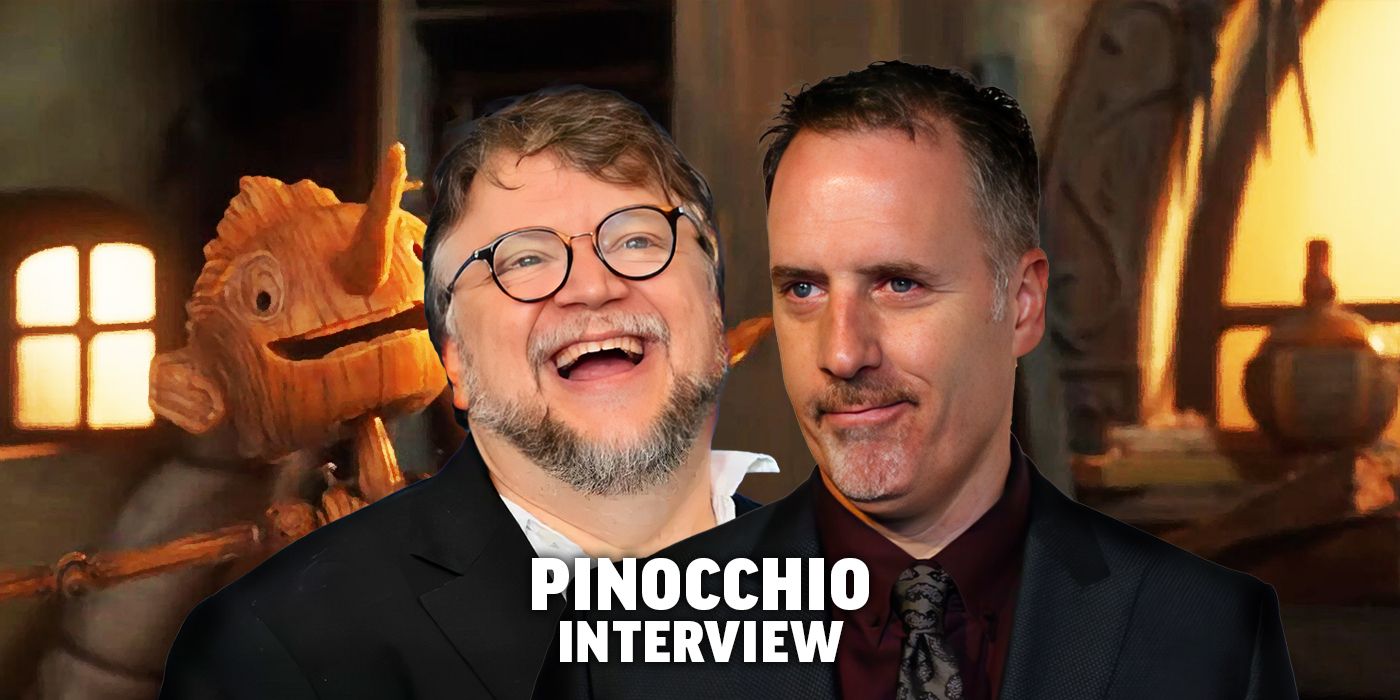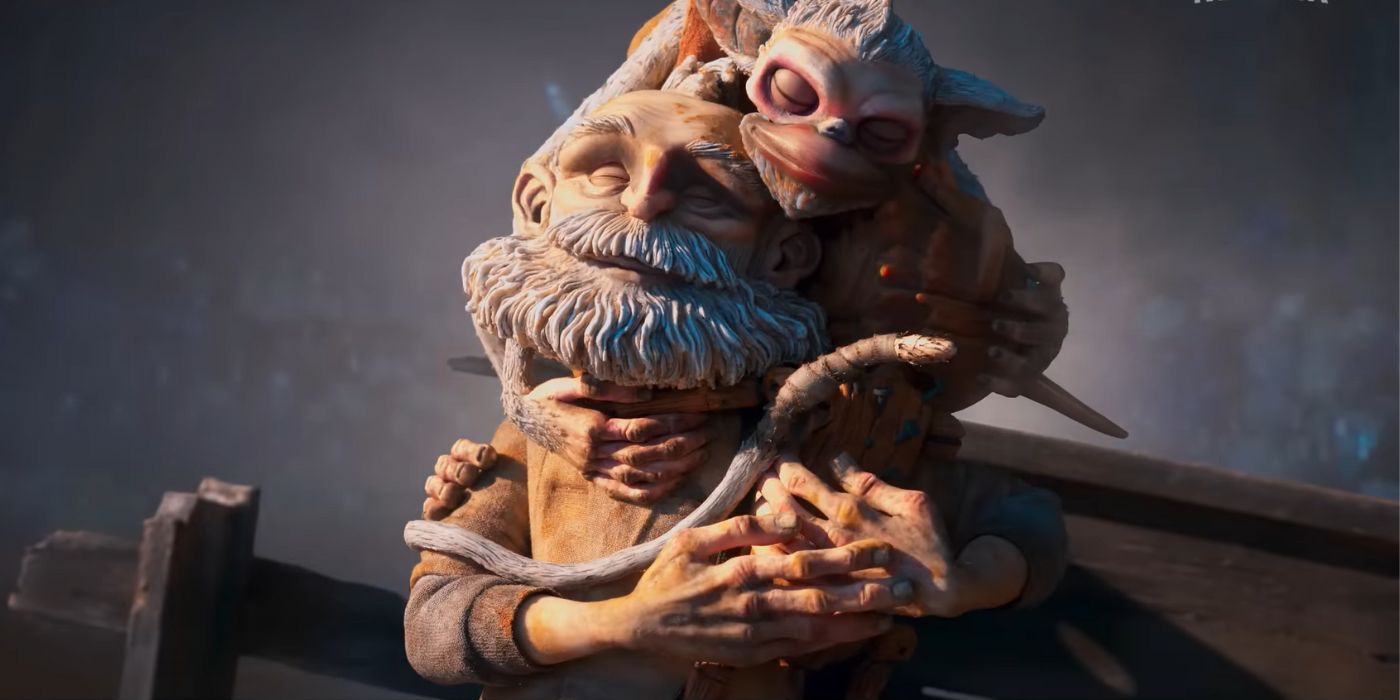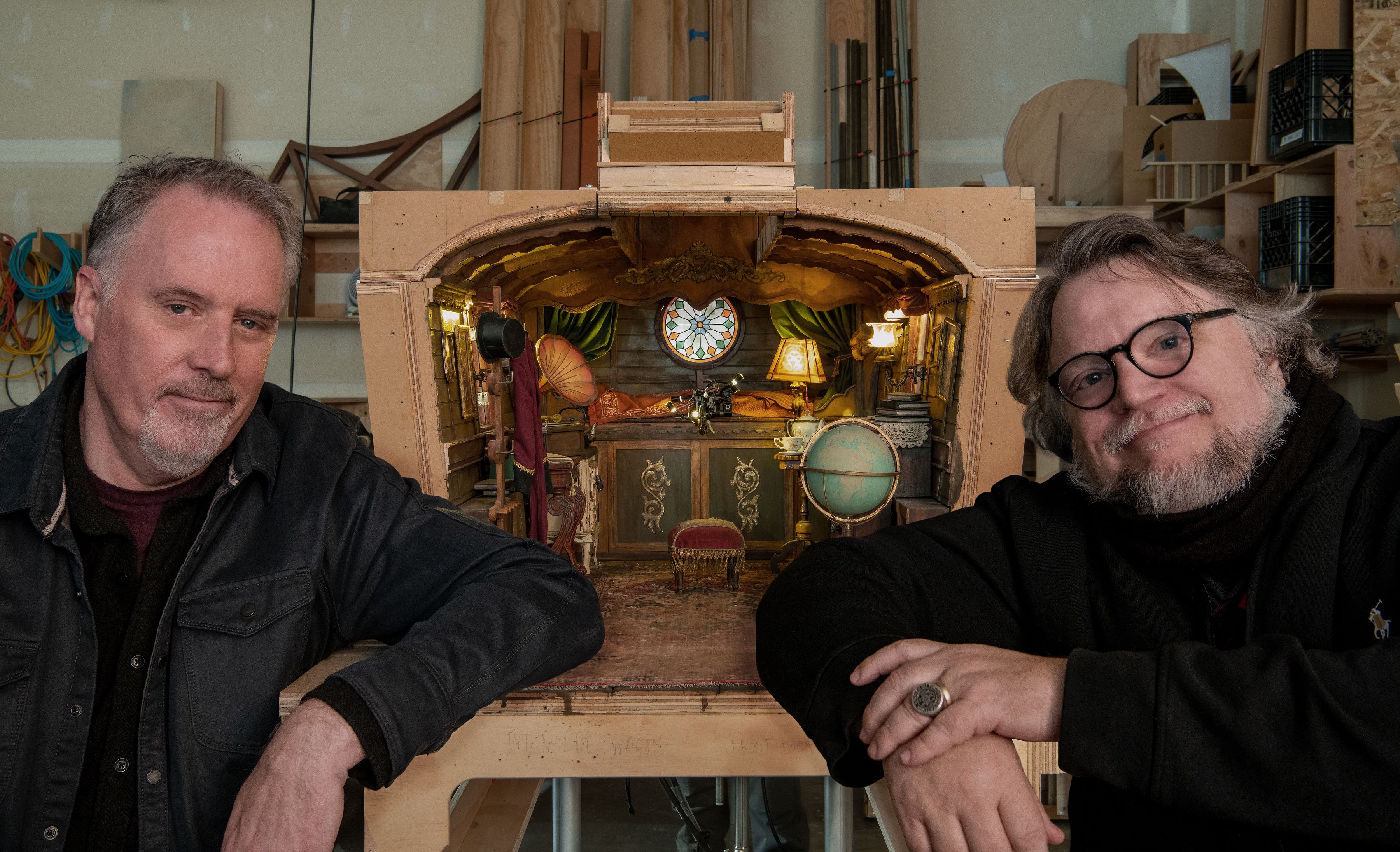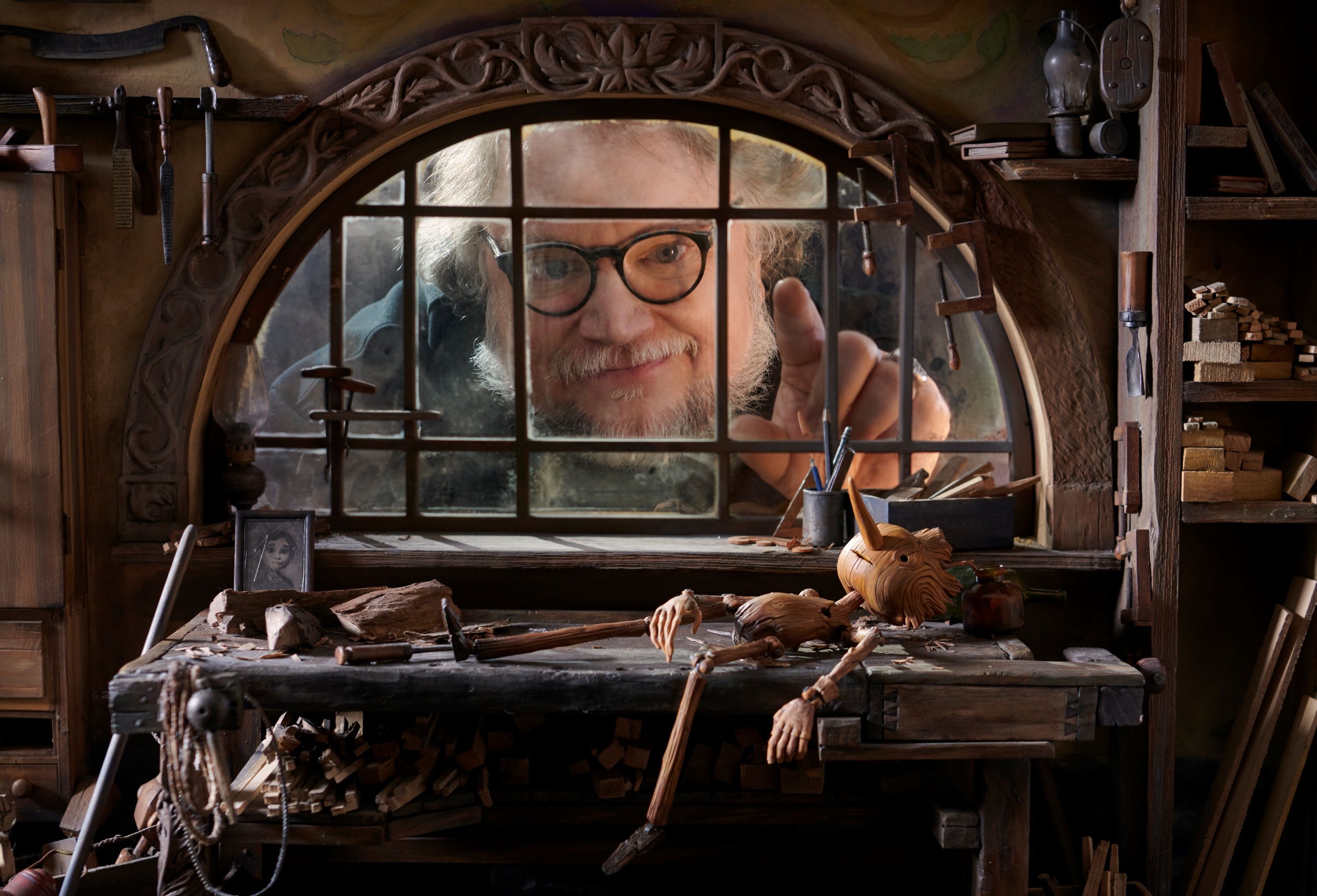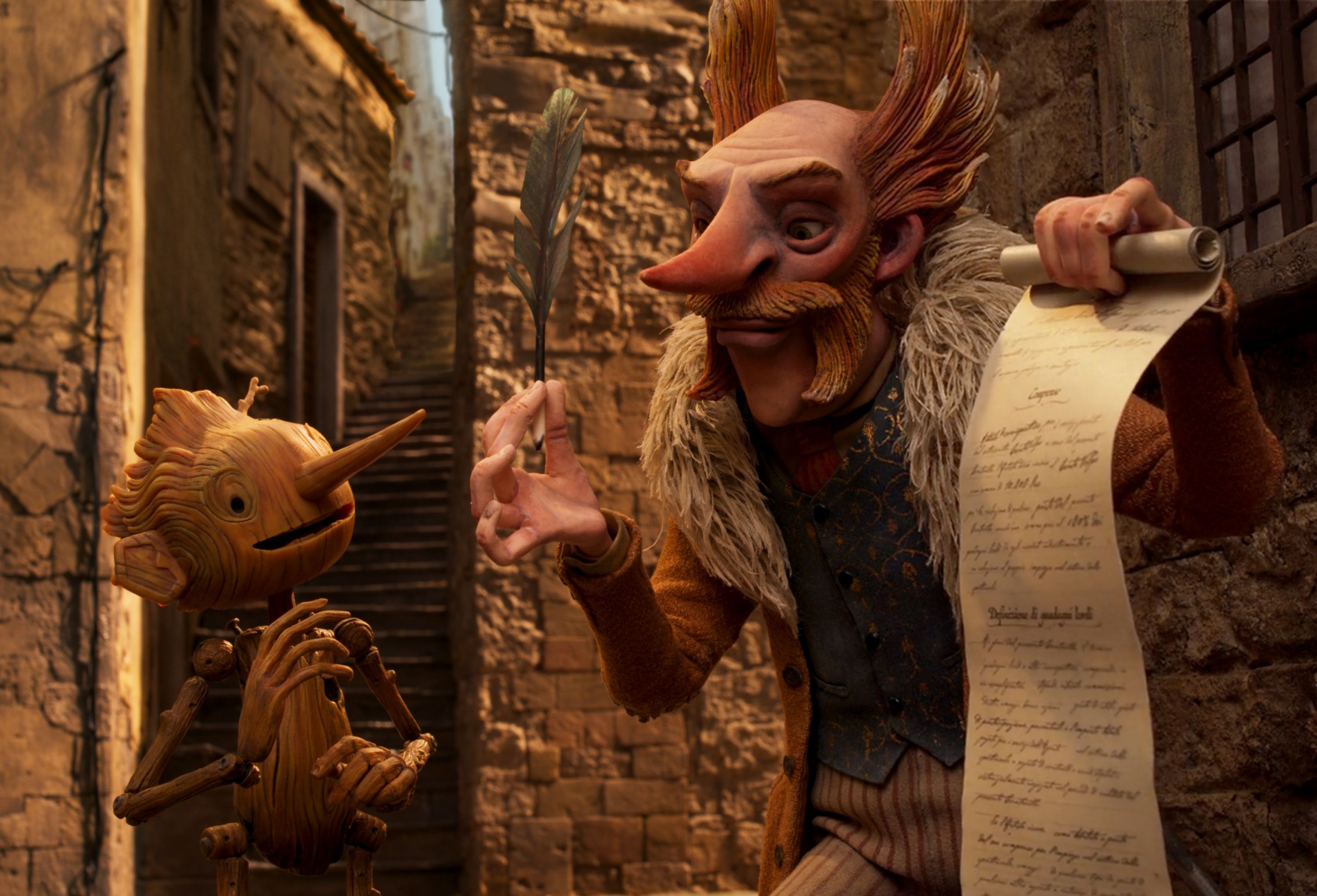It’ll probably surprise no one when I tell you that Guillermo del Toro’s Pinocchio looks incredible. I was able to see the first thirty-five minutes and was floored at every aspect of the stop-motion film, including the level of artistry in every shot. In addition, unlike previous versions of Pinocchio, del Toro sets the film in Mussolini's Italy, against a Fascist backdrop, which adds a fantastic and surprising layer to the well-known story.
Shortly after seeing the footage, I got to speak with del Toro and Pinocchio co-director Mark Gustafson. They talked about how grateful they are to Netflix for making both Pinocchio and Henry Selick’s Wendell & Wild, which shot took two and a half months to plan and why it was so difficult, and why they wanted the animators to take ownership of the character’s performance. In addition, if you’re not aware, del Toro likes to take things home from set, and he revealed he now has it in his contract.
“And in my case it's in my contract. I take one of each and one of each set that I can accommodate. I think this is one of the things that is very almost compulsively beautiful about this, is that these are real miniature sets, real miniature props, real miniature clothing aged to look like real fabric. It's like a dream set you would have as a kid.”
Netflix’s Pinocchio is voiced by newcomer Gregory Mann and the film also stars Ewan McGregor as Cricket, David Bradley as Geppetto, Tilda Swinton as Fairy with Turquoise Hair, Christoph Waltz as Count Volpe, Cate Blanchett as Spazzatura, Ron Perlman as Podesta, Finn Wolfhard as Candlewick, John Turturro as Master Cherry, Tim Blake Nelson as the Coachman, and Burn Gorman as Carabiniere.
Watch what del Toro and Gustafson had to say in the player above, or you can read our conversation below.
COLLIDER: I want to start with congratulations. The footage you showed earlier today looks spectacular. I cannot wait to see the finished film. I have a lot of questions, but I'm going to start with probably the most important thing. I know Guillermo likes to take home things when he makes a movie. When he builds anything for a film, he needs to own it. He'll make three of something so he can have something. So, for both of you, what did you each borrow from set? And Guillermo, how do you have any room left in your home to take anything?
GUILLERMO DEL TORO: Well, real estate is my second passion. If I can, I sell a house and buy one a little bigger or buy a little apartment and fill it with collectibles. It is a slow thing. But here, the beauty of animation, and this is important, because we are working with many sets simultaneously, you need multiples of every puppet. So there's one for almost anyone that would want one.
MARK GUSTAFSON: Yeah. Something disappears...
DEL TORO: Yeah. And in my case it's in my contract. I take one of each and one of each set that I can accommodate. I think this is one of the things that is very almost compulsively beautiful about this, is that these are real miniature sets, real miniature props, real miniature clothing aged to look like real fabric. It's like a dream set you would have as a kid.
GUSTAFSON: Yeah. I would have to pinch myself every day going in. And at one point, we had 60 units shooting at the same time. But it was this huge world of miniature sets and puppets, and just being able to walk out there and experience that every day, it's like, what more could a kid want? It was just fantastic.
Mark, did you take home one of everything, or what did you steal?
GUSTAFSON: I don't think I want to say.
Got it. I understand. You don't have anything at all.
GUSTAFSON: No, I got nothing.
DEL TORO: Police report going in.
Guillermo, if I'm not mistaken, you have been working on trying to make this Pinocchio for at least 14 years, and you consistently struggled with the financing and finding someone to make the movie. So, I just want to take a moment to thank Netflix for not only your film, but for Henry Selick being able to also do Wendell & Wild and championing stop-motion.
GUSTAFSON: These are the salad days for-
DEL TORO: These are the salad days for stop-motion and Phil Tippett completing Mad God and so forth. I don't think there's ever been a year in which the competitive moment of animation is so much a technique that is as cherished and as rare and as always, on the brink of extinction, stop-motion it’s beautiful to see this renaissance. I tell you the reason I was able to feel comfortable is because Netflix, through the almost decade of Tales of Arcadia, we developed a relationship. They knew I would deliver consistently. I was not a guy that signed something and walked away. I was involved and checking the quality and the arc and the scripts and the animatics and everything on the Tales of Arcadia. And they said he's going to be equally faithful with this. And he is not a guy that is going to come in and out.
He is going to stay with it. That's the reason we could make it. This is not a movie that was done "for kids." This is a movie that the family can watch together, but is for me as personal and of a piece with Pan's Labyrinth and Devil's Backbone. It's about childhood and the world at war and about the beautiful and the terrible things in this world. We could only make it here, and we could only make it now after, as you say, about 15 years or more.
Well one of the things about stop-motion is there's no shot that's easy. Every single shot is difficult. But I am curious, was there one particular shot on this, whether it be through movement of camera or from the length of the shot you were trying to pull off, that ended up being exponentially more difficult?
GUSTAFSON: Well, there was one shot, yeah, when Spazzatura the monkey comes, he leads us to meet one of our villains. And he comes through this whole carnival that's been created. And it was a oner, and it was a long shot and there were lots of puppets involved, lots of choreography, lots of action.
DEL TORO: Single shot.
GUSTAFSON: One single shot. Yeah. It took us about two and a half months to set it up. And it took about a month to shoot.
DEL TORO: And we went through about three puppets. We destroyed three puppets of Spazzatura doing that shot. And from the beginning, when we were talking about staging with the camera in a more naturalistic way, where the camera moved and the actors moved and more like you would stage in live action, that was one of the shots that was singled out from pre-production. We are going to do this one this way.
And it was searching naturalism, not only on the way we shot with the camera, but the actors. The acting in this movie does not recur to pantomime and key posing and all these languages that has been codified almost to the emoji point of being a repetition of hip poses. We wanted to have actors that acted and that were internal. You could see them thinking. You could see them emoting and growing and listening and doing failed acts, making mistakes at 24 frames of animation a second. We made them stumble. We made them topple something and pick it up. We made them itch, et cetera, et cetera. We did a lot of things that... This all came out of a phrase that I'll never forget, that Miyazaki said, "If you shoot the ordinary, it will be extraordinary." And I think that was one of the great North Stars of this movie.
GUSTAFSON: Using some of that restraint with the characters, really it forces the audience to lean in a little bit more, and I think helps them connect with these characters in a more realistic way.
One of the things about stop-motion, again, is that every second costs real money to animate. So can you sort of talk about figuring out, and measuring budget with how long the movie can be? Because every minute costs a lot of money.
DEL TORO: Well, one of the things we knew is that we needed to keep the movie at a certain range. So we were aspiring to the greatness and scope. The ambitions were huge, unlimited, on a budget that was limited. But the important thing is the way we animated, the rhythm of the animation, the rhythm of the scenes, there are scenes where the characters sit down and talk, and you can bask in just two beautiful two shots or a wide, and they are acting. And you see these things alive. And we knew that took time for the animators. Why don't anyone animate failed acts? Because they consume animator hours. We have this very clear from the beginning. Then we had a monkey wrench thrown into the machinery with COVID. And we had to wrangle that also, who could work, distancing, keeping the safety of the team, and so forth, and all that fiscal aspect of it. It took a lot, every ounce of, sort of, restrained, while we were completely unrestrained and looking for excellence.
GUSTAFSON: Yeah, absolutely. And we had to trust our animators. We had to find the best of the best and really communicate with them what the overall aesthetic of the film was, what the acting style was, and then give them as much freedom as we possibly could. As we said, once we gave them the direction, we didn't want them to be afraid. There's nothing worse than an animator who's afraid. We want them to feel brave and be able to make choices because that's what actors do, too. And that's how you get the best out of them. We had some fabulous animators.
DEL TORO: I think we have seriously the greatest of all time in this movie that are alive and in this world. We gave minute instructions. We had from them minute video rehearsals of the moment. And then after dictating and agreeing on all that, we said, "Now if you find something else, you are the actor. You're not just following orders, you are making this character live. Do it."
GUSTAFSON: People really responded to that.
On that note, I got to go. I'm just going to say, I cannot wait to see the finished film. Thank you so much for your time.
DEL TORO: Thank you, man. See you around.
Guillermo del Toro’s Pinocchio is in theaters on November 25 and available to stream on Netflix on December 9.

